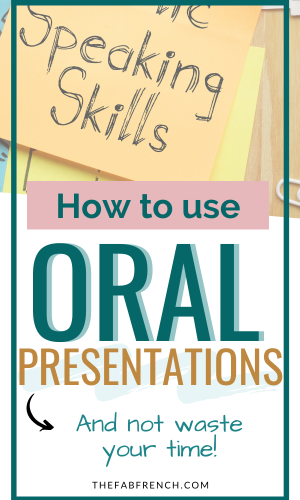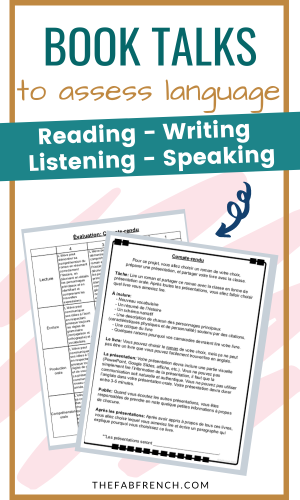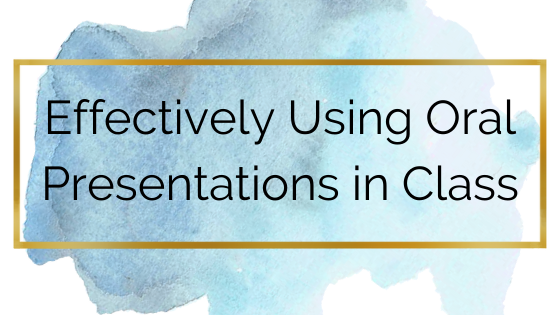So.. I’m going to be 100% honest. For YEARS I have avoided individual presentations in front of the class because, let’s be real, who wants to sit and watch 30-35 presentations PER CLASS. I usually teach classes of 30-35 students (sometimes up to 40!), and 4 different classes. That’s A LOT of presentations to sit through. I never felt that I could efficiently implement oral presentations into my pedagogy.
But I have recently had a change of heart and I want to share with you why.
Let’s chat about how you can, and why you should, efficiently implement oral presentations into your teaching.

Teaching public speaking
Before you start your project/assignment, spend some time talking about what makes a successful presentation. What type of presentation are you looking for? Discuss using visuals to enrich the presentation, but not as a script (we’ve all seen students spend their entire presentation reading their slides before). Discuss vocabulary, eye contact, intonation, etc. Once you have done this once, you shouldn’t need to do it again.
With my Grade 8 students, I chat about:
- Volume
- Eye contact
- Visuals to enrich the presentation
- Body language
- Intonation, enunciation, and pronunciation
- Vocabulary choice
- Engaging with the audience
These topics may differ depending on the grade level of your students but this list can be used as a home base for you to figure out what to address. This may take a few days but I promise it will greatly improve the quality of the presentations that the students do.

Creating a complex assignment and rubric
When you are deciding whether or not the students are going to do a presentation, make sure that you think about the assignment and whether or not it can assess multiple competencies (reading, writing, listening, and speaking). This is what I mean by efficiently implementing oral presentations into your classroom!
In my opinion, it’s not worth it to sit through dozens of presentations if I’m only assessing one thing. I’ve started creating projects that allow for an assessment of at least 3 language competencies, but preferably all 4.
Most recently, I have created a “Compte-rendu” or Book Talk assignment that will assess all 4 language competencies. This makes this worth the time that the presentations will take because I’m able to get a well-rounded evaluation of the student.
To include all language competencies in my book talk assignment, the students had to read a novel and complete a “schéma narratif” (reading), write a summary and a character description (reading and writing), verbally present it in front of the class (speaking), and take notes on the presentations to then choose a book they would read and explain what about the book interested them (listening). By organizing the assignment this way, spending the time to do the presentations is totally worth it.
Staggering your presentations
Staggering the presentations isn’t necessary, and it doesn’t work for all assignments, but I do strongly recommend doing it when possible. What I mean by staggering presentations, is choosing 1-2 days a week for the presentations and having students sign-up for their presentation day.
I’ve given my Grade 9 students a current events presentation assignment. Each student has to choose a current event, research it, and present it to the class. For this assignment, I have designated every Friday as presentation days. I made a sign-up sheet with the dates of the Fridays included and two spaces for names each Friday. I placed it on my door at lunch and students were then responsible for coming to my room and signing up for the date of their choice.
By spacing the presentations out, it makes them much more manageable and the students are way more likely to stay engaged for all presentations when they have a break in between.
I know that this isn’t always possible. If not, I recommend giving one due date (such as March 28 and then choosing students randomly to present. All students must be ready to present March 28 because there is a chance that they will be called. You’ll likely only get through a handful of students per day but this makes it fairer for all students.
Now remember, this will still take up some valuable class time, BUT I think it’s worth it because of how many outcomes and language competencies you can assess in a single assignment.
These are the reasons why I think it’s smart to efficiently implement oral presentations into your classroom routines.
Have fun with it and see what your kiddos can do!
Looking for more ways to assess their oral production?? Check this article for more ideas!
5+ to assess verbal production


